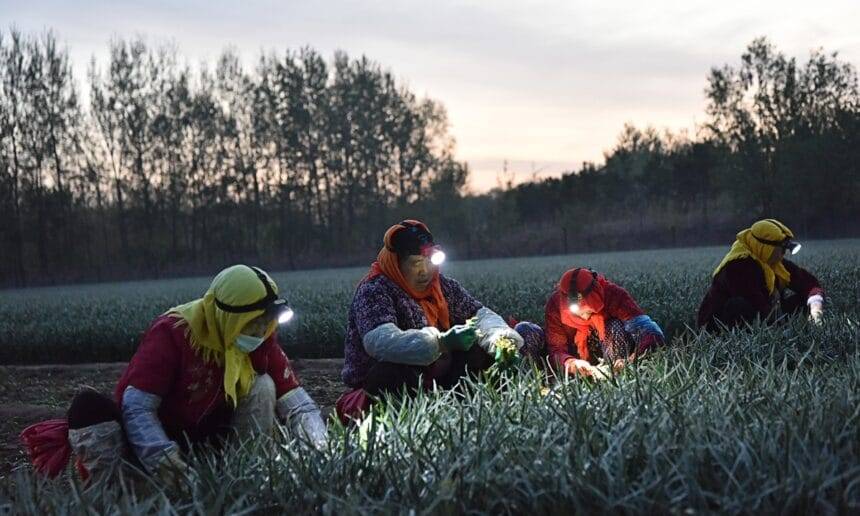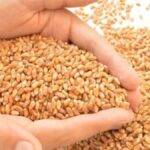Main Points In Hindi (मुख्य बातें – हिंदी में)
-
साझा खेतों की बढ़ती लोकप्रियता: चीन के कई शहरों में "साझा फार्म" की अवधारणा तेजी से फैल रही है, जहां छोटे उर्वरित भूखंड शहरी निवासियों को खेती का अनुभव और प्रकृति के साथ जुड़ने का अवसर प्रदान करते हैं।
-
ग्रामीण भूस्वामियों और शहरी निवासियों के बीच सहयोग: साझा खेतों में ग्रामीण भूस्वामी शहरवासियों को अप्रयुक्त भूमि किराए पर देते हैं, जबकि शहरवासी फसल उगाने और उसकी देखभाल में मदद करते हैं, जिससे खेती का एक नया मॉडल विकसित होता है।
-
आध्यात्मिक और भौतिक लाभ: साझा फार्मिंग से न केवल ताजा, कीटनाशक-मुक्त सब्जियाँ मिलती हैं, बल्कि लोगों को खेती के अनुभव और परिवार को एक साथ लाने की खुशी मिलती है। यह कृषि संस्कृति और आधुनिक जीवन के बीच का संबंध भी मजबूत करता है।
-
नई व्यावसायिक संभावनाएँ: साझा कृषि मॉडल नए व्यापार अवसर प्रस्तुत करता है और शहरी-ग्रामीण विभाजन को पाटने में मदद करता है, जिससे नए उपभोग परिदृश्यों और व्यवसाय मॉडलों का विकास होता है।
- शिक्षा और सामाजिक गतिविधियाँ: साझा फार्मों में बच्चे कृषि के बारे में सीखने के लिए आते हैं, जिससे न केवल कृषि जागरूकता बढ़ती है, बल्कि पारिवारिक और सामुदायिक जुड़ाव भी मजबूत होता है।
Main Points In English(मुख्य बातें – अंग्रेज़ी में)
Here are the main points from the provided text:
-
Rise of Shared Farms: The concept of "shared farms" has gained popularity in many Chinese cities, providing urban residents with small plots (20 to 30 square meters) of land to engage in agriculture, thereby reconnecting them with nature.
-
Benefits for Urban Residents: Shared farms allow city dwellers to escape the hustle and bustle of urban life, offering them a chance to engage in farming activities, promote physical fitness, and strengthen family bonds through shared agricultural experiences.
-
Utilization of Unused Land: Rural landowners lease unused land to urban residents, who actively participate in cultivating crops. This model not only maximizes the utilization of rural land but also creates new business opportunities for farmers.
-
Cultural and Economic Impact: Shared farming promotes a connection between agricultural culture and modern life, helping to bridge urban-rural divides and fostering new consumption patterns and business models.
- Educational Opportunities: Farms also serve as educational spaces, attracting large numbers of schoolchildren each year to learn about agriculture through social practice activities, thereby instilling knowledge and appreciation of farming among the younger generation.


Complete News In Hindi(पूरी खबर – हिंदी में)
17 अप्रैल, 2024 को पूर्वी चीन के शेडोंग प्रांत के वेफ़ांग के एक गाँव में सब्जी के खेत में लीक की कटाई करते समय ग्रामीण हेडलाइट्स पहनते हैं। फोटो: वीसीजी
ताज़ी, कीटनाशक-मुक्त सब्जियाँ उगाने के लिए निजी भूखंड का मालिक होना कई शहरी निवासियों के लिए लंबे समय से एक सपना रहा है। अब, यह सपना “साझा खेतों” के उदय के साथ सच हो गया है, जहां भूमि पूर्व-विभाजित और समतल है, जो हरित कनेक्शन चाहने वालों के लिए अर्ध- या पूर्ण-प्रबंधित विकल्प प्रदान करती है।
हाल के वर्षों में, “साझा फार्म” की अवधारणा चीन के कई शहरों में लोकप्रियता में बढ़ी है। उपनगरीय क्षेत्रों में, भूमि के छोटे भूखंड, प्रत्येक को 20 से 30 वर्ग मीटर में विभाजित किया गया है, खेती का अनुभव करने और प्रकृति के साथ फिर से जुड़ने के इच्छुक शहरी निवासियों को किराए पर दिया जा रहा है। जो स्थान एक समय सेवानिवृत्त लोगों के लिए एक आश्रय स्थल था, वह अब युवा शहरवासियों के लिए शहरी जीवन के शोर और हलचल से बचने, एक कुदाल उठाने और खेतों में खुद को कृषि कार्य में लगाने का एक तरीका बन गया है।
“साझा फार्म” का तात्पर्य ग्रामीण भूस्वामियों से है जो शहर के निवासियों को अप्रयुक्त भूमि पट्टे पर देते हैं और उन्हें फसल उगाने और प्रबंधित करने में सहायता प्रदान करते हैं। बदले में, शहर के निवासी फसल बोने और उसकी देखभाल करने जैसे दैनिक कार्य करते हैं और अंततः अपने उपभोग के लिए उपज की कटाई करते हैं। यह मॉडल न केवल बेकार ग्रामीण भूमि का उपयोग करने का एक नया तरीका प्रदान करता है, बल्कि उद्यमियों को नए व्यावसायिक अवसर भी प्रदान करता है, साथ ही लोगों को ताजी, सुरक्षित सब्जियों का आनंद लेने और खेती के जीवन की खुशियों का प्रत्यक्ष अनुभव करने का एक तरीका भी प्रदान करता है।
36 वर्षीय सरकारी स्वामित्व वाली उद्यम कर्मचारी वांग जिहे ने ग्लोबल टाइम्स को बताया कि वह और उनके भाई-बहन कई वर्षों से साझा कृषि अनुभव का आनंद ले रहे हैं।
वांग ने बताया, “हमने बीजिंग के उपनगर में हान्हे रोड के पास एक साझा बगीचे में 40 वर्ग मीटर का प्लॉट 5,000 युआन ($690) प्रति वर्ष पर किराए पर लिया।”
“शुरुआत में, यह बैंगन, पत्तागोभी और हरी फलियाँ सहित जैविक सब्जियाँ प्राप्त करने के बारे में था, लेकिन फिर हमने पाया कि जमीन पर काम करने से न केवल हमारी फिटनेस में सुधार हुआ और हमें कृषि जीवन का स्वाद मिला, बल्कि हमारा परिवार भी एक साथ आ गया।”
साझा फार्मों के माध्यम से, प्रतिभागियों को भौतिक प्रचुरता और आध्यात्मिक पोषण दोनों का अनुभव होता है। लेकिन इस मॉडल का महत्व व्यक्तिगत संतुष्टि से परे है। जैसे-जैसे कृषि संस्कृति आधुनिक जीवन के साथ जुड़ती है, साझा खेत उपभोग को बढ़ावा देने, शहरी और ग्रामीण विभाजन को पाटने और नए व्यापार के अवसर पैदा करने में भी मदद करते हैं। गहरी, अधिक आंतरिक जरूरतों को पूरा करके, वे नए उपभोग परिदृश्य और व्यवसाय मॉडल खोलते हैं।
क्यूई उपनाम वाले एक जैविक फार्म के मालिक ने ग्लोबल टाइम्स को बताया कि यह फार्म, जो अब बीजिंग का पहला राज्य-स्तरीय पारिस्थितिक फार्म है, ने कुछ साल पहले साझा कृषि सेवाएं प्रदान करना शुरू किया था। उन्होंने कहा कि फार्म में वर्तमान में 261 एकड़ कृषि भूमि है, जिसमें मुख्य रूप से टमाटर, खीरे, मक्का, शकरकंद और भिंडी जैसी रोजमर्रा की फसलें उगाई जाती हैं।
“साझा फार्म कार्यक्रम को जोड़ने के बाद से, हमने माता-पिता-बच्चे की गतिविधियों पर ध्यान देने के साथ, ज्यादातर परिवारों के लिए एक फार्म पर्यटन क्षेत्र बनाया है।”
क्यूई ने बताया कि हर साल, लगभग 60,000 स्कूली बच्चे सामाजिक अभ्यास गतिविधियों के माध्यम से कृषि के बारे में जानने के लिए फार्म में आते हैं। फार्म साझा उद्यान स्थान के 27 भूखंड प्रदान करता है, प्रत्येक का माप लगभग 19.8 वर्ग मीटर है। अधिकांश आगंतुक पारिवारिक समूहों में आते हैं, कुछ तो वर्ष में 10 से 50 बार तक लौटते हैं।
क्यूई ने कहा कि जैविक एजेंटों, जैविक उर्वरकों और नवीन प्रौद्योगिकियों का उपयोग करके प्रयोगों के माध्यम से, खेत उच्च गुणवत्ता वाली सब्जियां पैदा करता है। आज, जैविक जीवन केवल एक आहार प्राथमिकता से कहीं अधिक विकसित हो गया है – यह अब एक जीवन शैली दर्शन है।
लेखक ग्लोबल टाइम्स में पत्रकार हैं। life@globaltimes.com.cn
Complete News In English(पूरी खबर – अंग्रेज़ी में)
On April 17, 2024, villagers wearing headlamps harvest leaks in a vegetable field in a village in Weifang, Shandong province, eastern China. Photo: VCG
Owning a private plot of land to grow fresh, pesticide-free vegetables has long been a dream for many urban residents. This dream has become a reality with the rise of “shared farms,” where land is pre-divided and flat, offering semi- or fully-managed options for those looking to connect with nature.
In recent years, the idea of “shared farms” has gained popularity in cities across China. In suburban areas, small plots of land, each measuring 20 to 30 square meters, are being rented out to urban residents eager to experience farming and reconnect with nature. Places that were once only gathering spots for retired people are now becoming a way for young city dwellers to escape the hustle and bustle of urban life by picking up a shovel and engaging in agricultural activities.
“Shared farms” involve rural landowners who lease unused land to city residents and assist them in growing and managing crops. In return, the city residents perform daily tasks such as planting and caring for their crops and ultimately harvest the produce for their own consumption. This model not only provides a new way to utilize idle rural land but also offers entrepreneurs new business opportunities while allowing people to enjoy fresh, safe vegetables and directly experience the joys of farming life.
Wang Jihe, a 36-year-old employee from a state-owned enterprise, told the Global Times that she and her siblings have been enjoying the shared farming experience for several years.
Wang explained, “We rented a 40-square-meter plot in a shared garden near Hanhhe Road in the suburbs of Beijing for 5,000 yuan ($690) per year.”
“Initially, it was about obtaining organic vegetables like eggplants, cabbages, and green beans, but we found that working on the land not only improved our fitness and gave us a taste of agricultural life, but it also brought our family together.”
Through shared farms, participants experience both physical abundance and spiritual nourishment. However, the importance of this model goes beyond personal satisfaction. As agricultural culture blends with modern life, shared farms help promote consumption, bridge urban-rural divides, and create new business opportunities. By meeting deeper, more internal needs, they open up new consumption scenarios and business models.
A farm owner known as Qie stated that his farm, now Beijing’s first state-level ecological farm, began offering shared agricultural services a few years ago. He mentioned that the farm currently has 261 acres of agricultural land dedicated to everyday crops like tomatoes, cucumbers, corn, sweet potatoes, and okra.
“Since adding the shared farm program, we have created a farm tourism area focused on parent-child activities, catering mostly to families.”
Qie noted that every year, about 60,000 schoolchildren visit the farm to learn about agriculture through social practice activities. The farm offers 27 shared garden plots, each measuring about 19.8 square meters. Most visitors come in family groups, with some returning 10 to 50 times a year.
Qie explained that through experiments using organic agents, organic fertilizers, and innovative technologies, the farm produces high-quality vegetables. Today, organic living has evolved from being merely a dietary preference to a lifestyle philosophy.
The author is a journalist at the Global Times. Contact: life@globaltimes.com.cn








